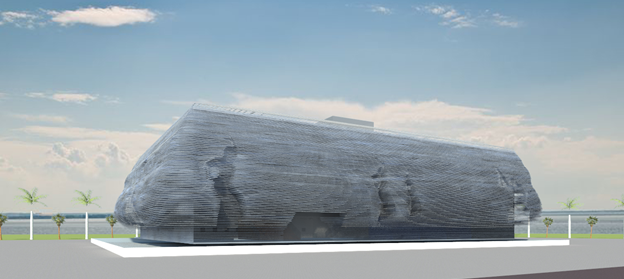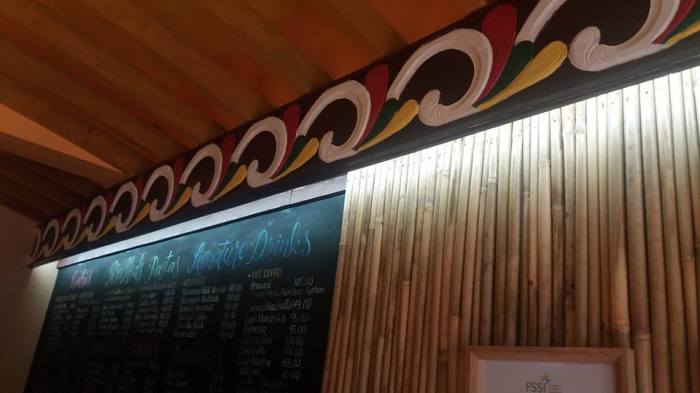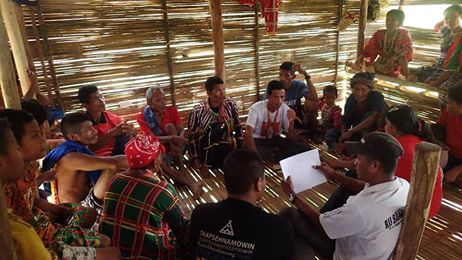
Philippine architecture is generally synonymous with 16th century Spanish architecture and the Bahay Kubo. Both of these are seen in different tourism and hospitality areas across the country. We hope that in the future, another form gains popularity – Philippine Neo-Vernacular architecture or pre-colonization architecture.
Meet Gloryrose Dy Metilla, an architecture graduate from the University of the Philippines Mindanao with a Masters in Urban and cultural heritage from the Australia Awards Scholarship Program that sent her to the University of Melbourne (Australia) and with a summer degree from the design school in Tonji University Shanghai. “

Gloryrose has a special passion for locally designed structures. Studying in Mindanao exposed her to the culture of different indigenous groups, where she realized that this was another facet of Philippine architecture and design. “We have more layers of identity [here in Mindanao]. There are so many colors and so many stories for people to experience.” One of her designs for a building was based on a cultural dance, which she translated mathematically to get unique designs. This won her the Red Point National Thesis competition and her work was displayed in Ayala Museum in Makati, Metro Manila.

After graduation she started working with TAO Pilipinas Inc, then moved to SM Engineering and Design Development. After a few years, she finally started Swito Designs Inc.
What’s unique about Gloryrose are her design principles and the process by which she designs – she coordinates with the community so that her design principles remain true to the indigenous knowledge that are still rich in certain parts of the Philippines, especially Mindanao.

Gloryrose is currently working on several projects, including a Bamboo House inspired from Matigsalug Design, a Residential House inspired from T’boli Design and Filipino Ukit, an office inspired by Mandaya weaves and a bamboo house and school inspired by the tribes of Bukidnon. She is also a toy designer as she founded Balay Balay 3d Architecture Puzzles, a toy puzzle company that showcases vernacular architecture of the Philippines and also designs board games such as the Marawi Journey Board Game.

On top of that, she is also working on a book about architecture in Mindanao Architecture Style Guide funded by the NCCA.

When asked why she was so interested in these things, she replied “Because through globalization we all look the same…. So you need to look through its unique culture.“ Arch Metilla makes a good point, as across the Philippines, modern education pulls the youth towards English and Tagalog, making them ignore other dialects. The same can be said for culture. The result is a more globalized society where the Philippines starts to behave like other global cities. This is not necessarily a bad thing, but forgetting one’s culture and origin is a sad narrative that should be prevented. Mixing our culture with architectural designs can help preserve and creative a dynamic culture for the country.

Gloryrose wants to promote the uniqueness of Filipino heritage through indigenous design. “The best way to give character to a place is to interpret and then express its cultural layers and identity.”

One interesting aspect about indigenous inspired architecture is the fact that science and cultural sensitivity meet. The designs she creates – specifically the Ata Paquibato Cultural Village, is done in consultation with the community, to make sure that she properly represents their culture. Their houses have more rounder timber, because that’s what the Ata Paquibato use. For the Bagobo, there is more bamboo, because that’s what their community uses. Indigenous architecture makes use of what’s available locally – a model of low carbon construction.
Low carbon construction can be the future of the industry, as it utilizes local materials, reduces transport costs and will push more money into the local economy.

One unique perspective Arch Metilla has is seeing “empty spaces” as spaces filled with elements of the environment. Many times construction means that a place is cleared out – cutting trees, removing grass – clearing it out in terms of a cement city definition. Gloryrose thinks differently. The earth, the trees, plants – they were all there prior to the structure, so the canvass she looks at already has certain elements to it, rather than seeing it as blank.
A second unique perspective is how Gloryrose deliberately leaves some spaces empty. She shares that the community was very specific that there should be spaces in between houses, to give privacy.
She also sees a similarity between her architect training and how the different ethnic groups design their homes. They intuitively take into account all the elements around them – water, earth, wind, sunlight. Their houses are adapted so that the morning light comes into their living room space.

When materials were discussed, Gloryrose’s perspective is that because we are an industry of compliance, the culture is to stay at the minimum standard. Unfortunately, many of our standards are Western based and not necessarily fit for this kind of weather and climate. We also do not have enough people producing sustainable lumber in the country.
When asked about how the industry can improve, she said that the industry needs to break out of its box, and be more creative. Many of our structures look the same and we can add distinctly Filipino traits to our structures – similar to what makes Japanese or Greek structures so recognizable. She adds that sometimes, houses in a village look so similar that you can’t even find your place. Our cities don’t look vibrant.
Gloryrose’s dream is for our cities to have a unique character and identity. The vibrancy of a place is often influenced by its architecture. Creativity is attractive, and we should stay away from boxes.
A good example is how a large part of Vigan’s economy comes from the vibrancy of the architecture of the houses. Now, imagine if each province could show something as vibrant, but was designed differently based on local tribal knowledge? It would be a sight to behold.
While this brand of architecture may not be popular, there is a great chance that it will gain favor with young Filipinos as the country continues to discover its own roots and identity. Perhaps in the future, Philippine architecture will not just be Hispanic style buildings, but ones that are inspired from the earth.
AVD is a supplier of sustainable construction materials and provides basic acoustic consultation services. The company’s dream is to make a more inclusive and sustainable construction industry. If you enjoyed reading this article and want to continue the conversation, please email Arch Gloryrose at gloryrosedy@gmail.com.